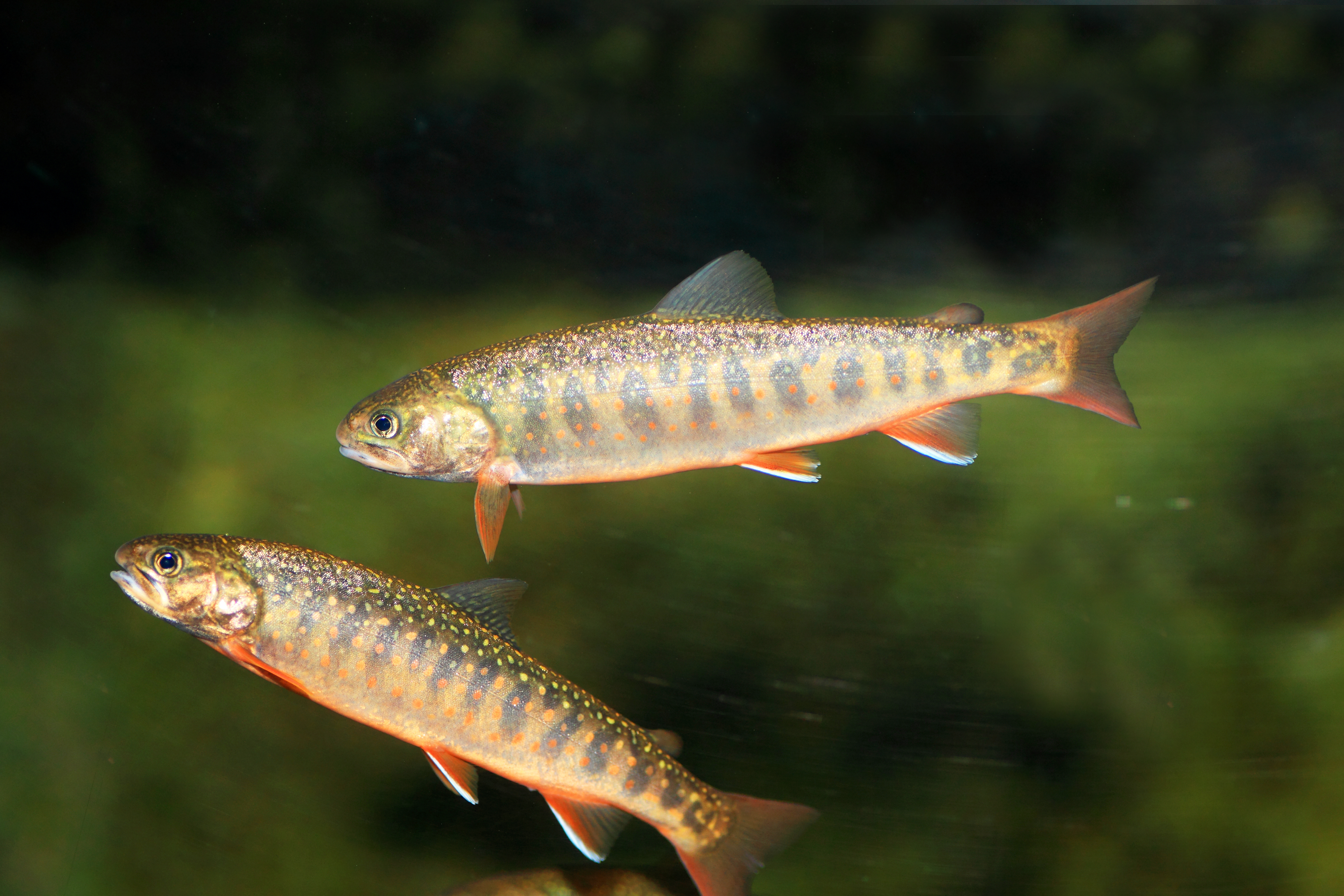Lake trout
(Salvelinus malma)

Description
The lake trout (Salvelinus namaycush) is a freshwater char living mainly in lakes in northern North America. Other names for it include mackinaw, namaycush, lake char (or charr), touladi, togue, and grey trout. In Lake Superior, it can also be variously known as siscowet, paperbelly and lean. The lake trout is prized both as a game fish and as a food fish. Those caught with dark coloration may be called mud hens. It is the only member of the subgenus Cristovomer, which is more derived than the subgenus Baione (the most basal clade of Salvelinus, containing the brook trout (S. fontinalis) and silver trout (S. agasizii)) but still basal to the other members of Salvelinus. From a zoogeographical perspective, lake trout have a relatively narrow distribution. They are native only to the northern parts of North America, principally Canada, but also Alaska and, to some extent, the northeastern United States. Lake trout have been widely introduced into non-native waters in North America and into many other parts of the world, mainly Europe, but also into South America and certain parts of Asia. Although lake trout were introduced into Yellowstone National Park's Shoshone, Lewis and Heart lakes legally in the 1890s, they were illegally or accidentally introduced into Yellowstone Lake in the 1980s where they are now considered invasive. Lake trout are the largest of the chars; the record weighed almost 102 pounds (46 kg) (netted) with a length of 50 inches (130 cm), and 15-40-pound (6.8-18.1-kilogram) fish are not uncommon. The average length is 24-36 inches (61-91 centimetres). The largest caught on a rod and reel according to the IGFA was 72 pounds (33 kg), caught in Great Bear Lake in 1995 with a length of 59 inches (150 cm). Lake trout inhabit cold, oxygen-rich waters. They are pelagic during the period of summer stratification in dimictic lakes, often living at depths of 20-60 m (66-197 ft). The lake trout is a slow-growing fish, typical of oligotrophic waters. It is also very late to mature. Populations are extremely susceptible to overfishing. Many native lake trout populations have been severely damaged through the combined effects of hatchery stocking (planting) and over harvest. Another threat to lake trout is acidification, which can have longterm effects on their populations through both direct harm and reduced prey populations (e.g. Mysis relicta).
Taxonomic tree:







